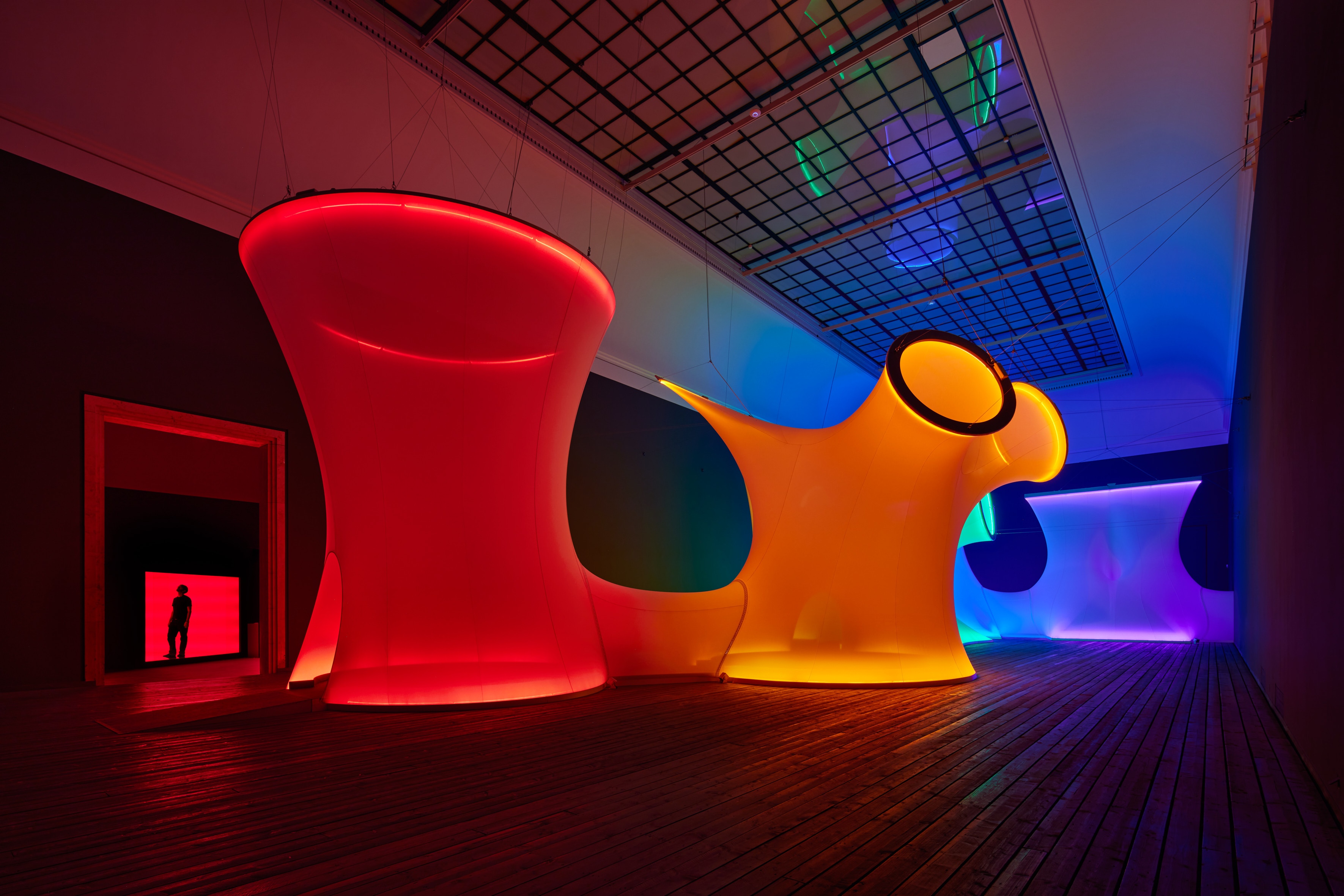1931
The Glass Palace in Munich’s Old Botanical Garden is destroyed by fire on the night of June 6. Adolf Abel creates a preliminary design for a new art exhibition building.
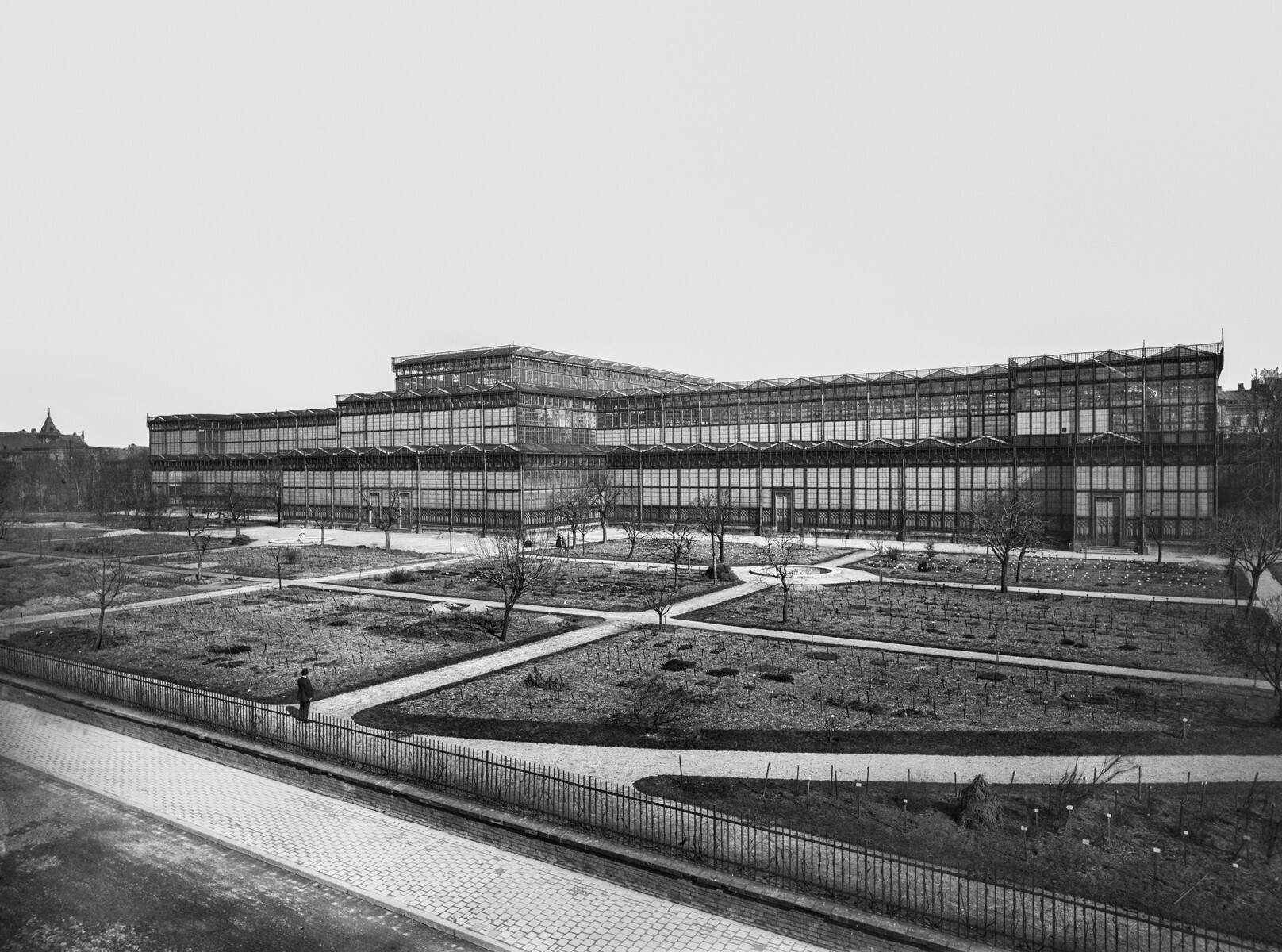
1932
Public tender of an architectural competition.
1933
Hitler seizes power in January 30. In early May, “Bauzeitung” magazine reports on the erection of a new art exhibition structure located on Prinzregentenstrasse along the southern edge of the English Garden. Construction of the “Haus der Deutschen Kunst” [House of German Art] based on plans by Paul Ludwig Troost (1878-1934). Establishment of the institution “Haus der Deutschen Kunst (Neuer Glaspalast).“ The foundation stone is laid on October, 15. The “Tag der Deutschen Kunst” [Day of German Art] is held and Munich is elevated to the ”Capital of German Art.”
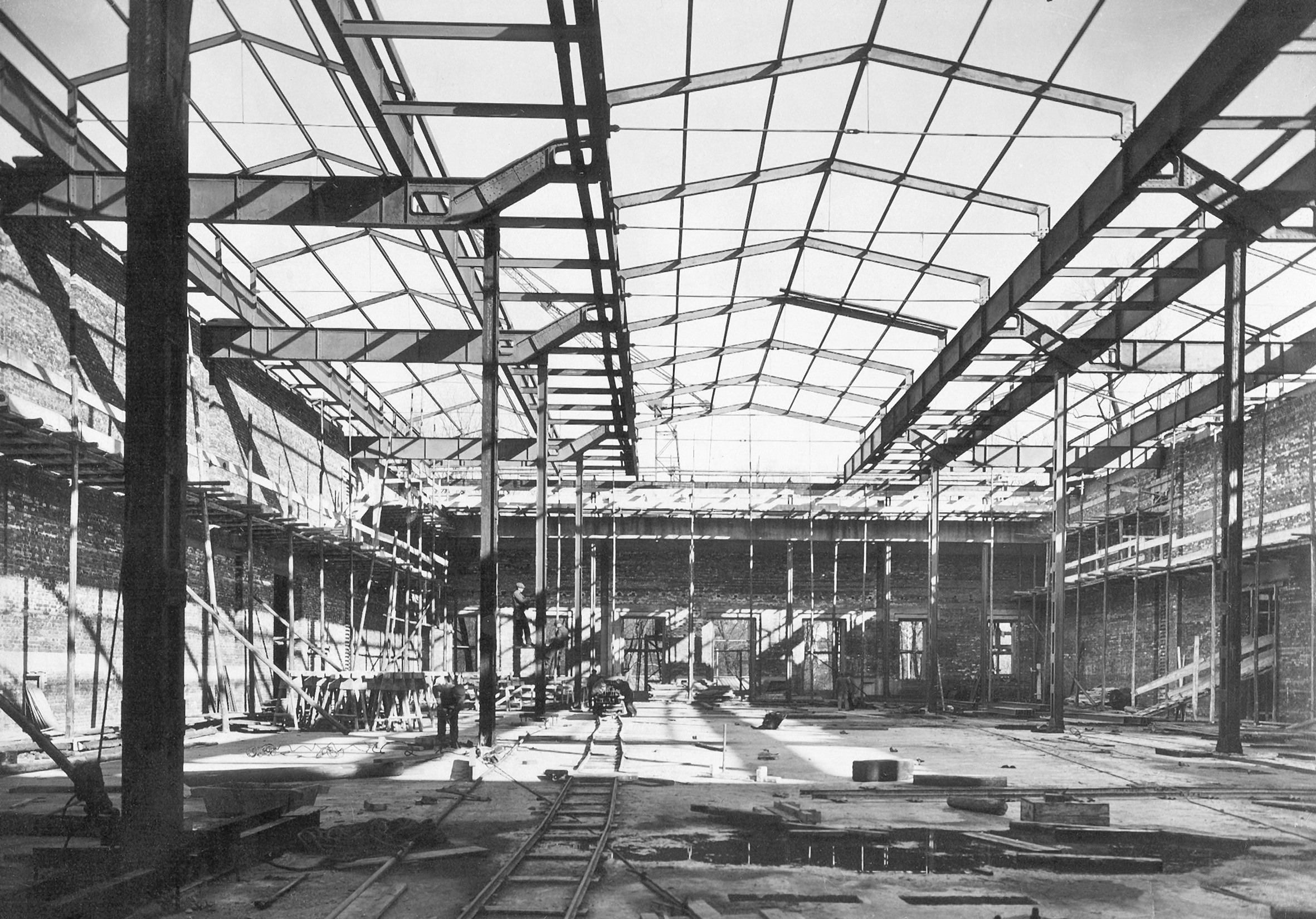
1937
Opening of the “Haus der Deutschen Kunst“ on July 18 with the first ”Große Deutsche Kunstausstellung“ [Great German Art Exhibition], presented annually until 1944. The ”Tag der deutschen Kunst” is held again (annually until 1939).
On July 19, the vilifying show ”Entartete Kunst” [Degenerate Art] opens in the gallery building of the nearby Hofgarten. Around 600 works of modern art confiscated from German museums and public collections are presented in a defamatory manner.
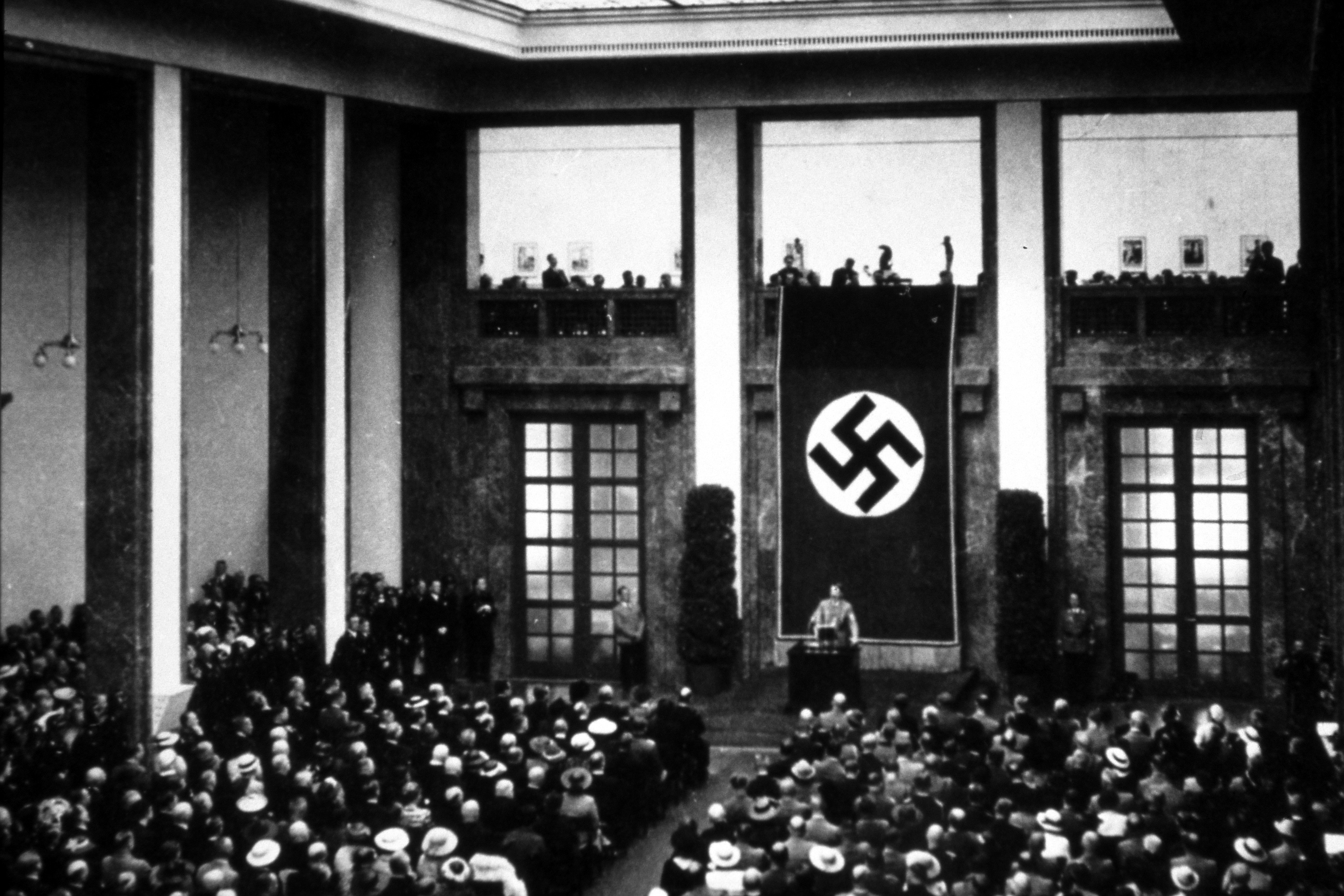
1938
Announcement of plans to create a ”Haus der Deutschen Architektur” [House of German Architecture] located opposite the “Haus der Deutschen Kunst”. The project is never realized.
1942
Pursuant to a program dictating air-raid protection measures, the façade of the “Haus der Deutschen Kunst” is covered with camouflage netting and part of its roof with artificial treetops. The building remains largely unscathed during the war.
1945
In early February, Hitler mandates another “Große Deutsche Kunstausstellung”.
American troops marched into Munich on April 30. Confiscation of the “Haus der Deutschen Kunst” by the American military government, which establishes an officers’ club with a restaurant, ballroom, shops and sports facilities. Employment of former employees of the “Haus der Deutschen Kunst“ to make an inventory of paintings and sculptures still in the building (until October 1949).
1946
Renaming of the exhibition hall to “Haus der Kunst.” Opening of the show “Bavarian Paintings of the 15th and 16th Century,” with works from the collection of the destroyed Alte Pinakothek. The “Bavarian Export Show” in the East Wing presents industrial and commercial goods, art and craft, and fashion (through 1948).
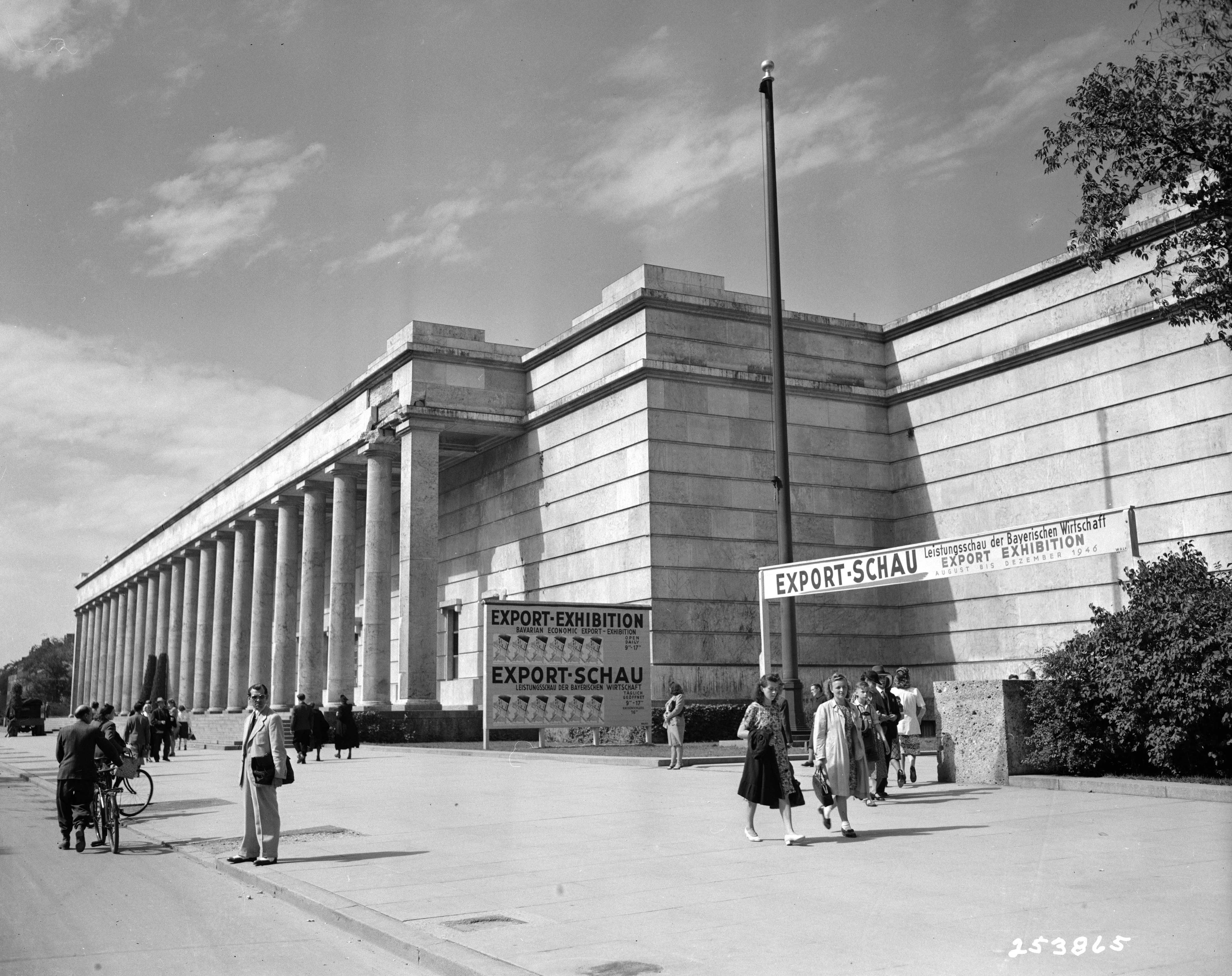
1948
Foundation of the “Ausstellungsleitung München e.V.” through the merging of three artist groups, Neue Gruppe, Neue Münchner Künstlergenossenschaft and Munich Secession e.V.
Peter A. Ade (1913-2005) becomes director. During his tenure, Haus der Kunst achieves international renown.
1949
Opening of the show “Der Blaue Reiter” curated by Ludwig Grote and presented in the West Wing.
In addition to the annual “Große Kunstausstellung München” [Great Art Exhibition Munich], the Ausstellungsleitung München e.V. organizes retrospectives of classical modernism and large themed exhibitions in cooperation with renowned art historians and curators. Carnival festival hosted here make Haus der Kunst a mardi gras bastion for 25 years.
1950
In the East Wing the atelier-restaurant "Prinzregentenstraße 1"moves into the ground floor (it later becomes the famous discotheque "P1").
1951
Protests following the opening of the ”Herbst-Ausstellung“ [Autumn Exhibition] 1951, which is organized by members of the “Münchener Künstlergenossenschaft (kgl. priv. von 1868) - Gruppe Gerhardinger”. Former protagonists of Nazi art, including Josef Thorak, are represented in the show.
1954
Foundation of the “Gesellschaft der Freunde der Ausstellungsleitung Haus der Kunst e.V.” [today: Gesellschaft der Freunde der Stiftung Haus der Kunst).
1955
The American military government hands the building back to the Bavarian government.
As part of the Picasso retrospective, Guernica is on view in Germany for the first time.
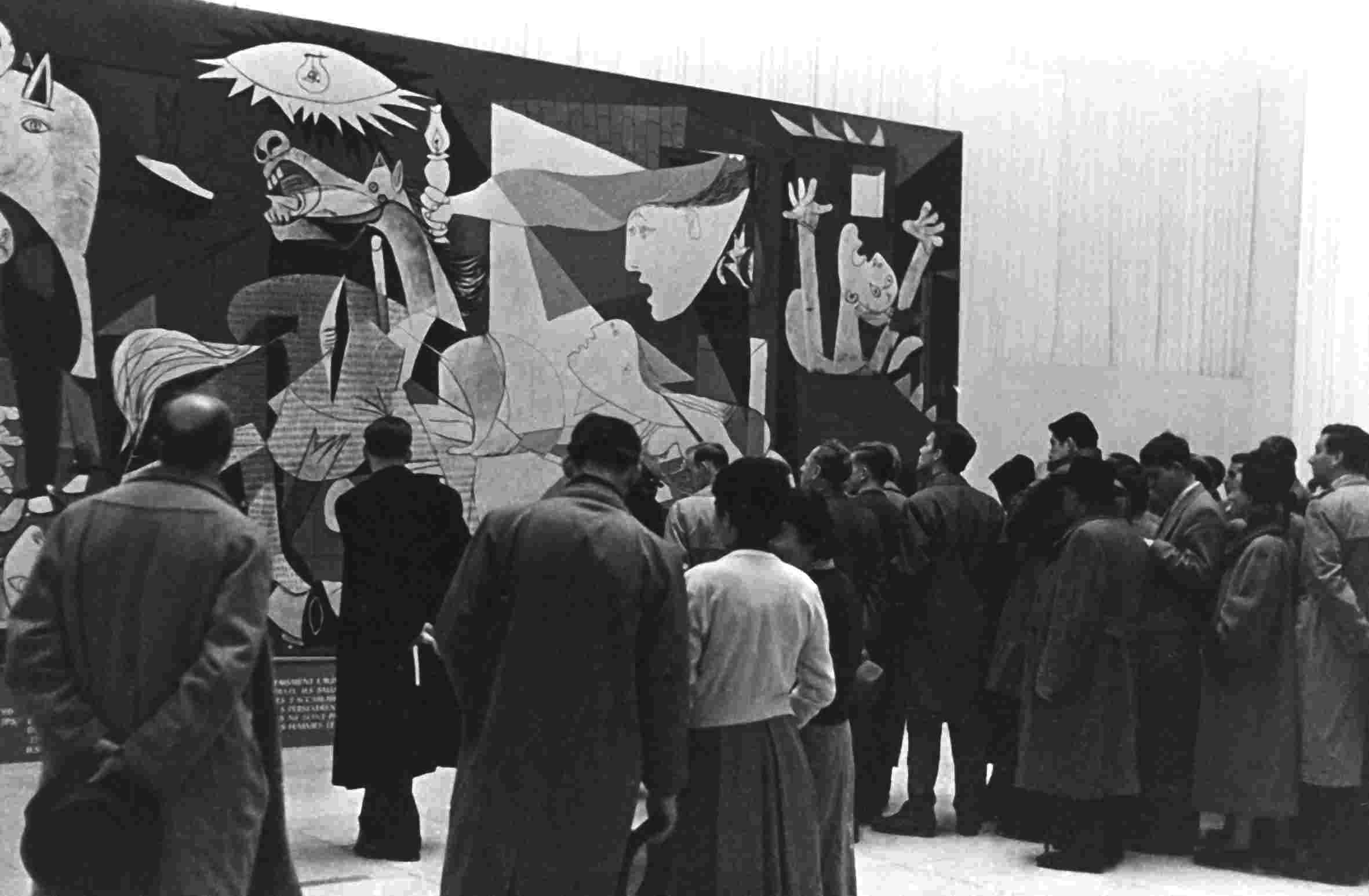
1956
Promotion of a competition that includes the redesign of the Middle Hall (formerly the “hall of honour”). Realization of Josef Wiedemann’s design proposal (the marble pillars and doors are painted white; a velum sheet is suspended from the ceiling, and walls are covered with burlap cloth).
1959
Sixteen maple trees are planted along the south facade on Prinzregentenstrasse in January.
1962
The exhibition “Entartete Kunst - Bildersturm vor 25 Jahren” (Degenerate Art - Iconoclasm 25 Years Ago), is the first to commemorate the ostracized artists and works of art confiscated by the National Socialists
1971
Recommendation by the Landesbaukunst-Ausschuss [State architecture committee] to demolish the building in the course of the upcoming expansion of the Altstadtring. In addition to traffic-related considerations, the commission cites the building’s Nazi past as a reason for their recommendation. Instead of total destruction the open stairs along Prinzregentenstrasse were demolished and replaced by a smaller set of stairs in the middle.
1972
A temporary structure designed by Paolo Nestler is erected on the building‘s north side to house the exhibition “Weltkulturen und Moderne Kunst” [World Cultures and Modern Art] as part of the 1972 Olympic Games.
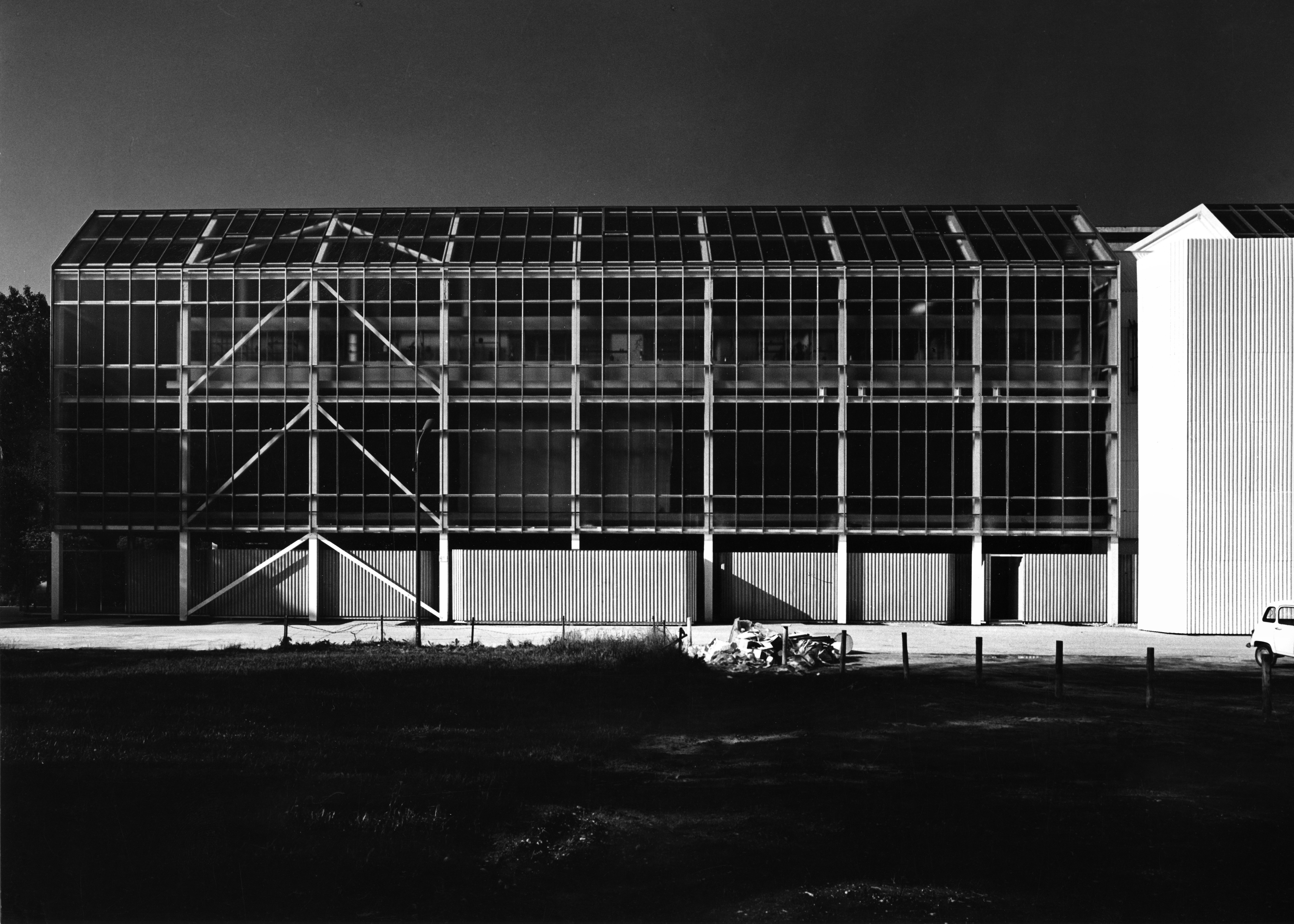
1980
The Staatsgalerie moderner Kunst moves into the West Wing.
The “Tutankhamun” exhibition presented in the East Wing attracts more than 650,000 visitors.
1982
Hermann Kern (1941-1985) is appointed director of Haus der Kunst.
1984
Joseph Beuys installs his work “The End of the 20th Century” in the rooms housing the Staatsgalerie moderner Kunst.
1985
Magdalena Huber-Ruppel (*1947) becomes director of the Ausstellungsleitung e.V.
1987
Opening of the exhibition “Entartete Kunst. Dokumentation zum nationalsozialistischen Bildersturm am Bestand der Staatsgalerie moderner Kunst in München”[Degenerate Art. Documentation on National Socialist Iconoclasm in the Holdings of the Staatsgalerie moderner Kunst in Munich] on the occasion of the 50th anniversary of the vilifying show “Entartete Kunst”.
1989
Controversy over the building’s future and how to deal with its troubled past.
1991
Renovation of the building’s East Wing begins. The Staatsgalerie moderner Kunst in the West Wing is closed (until October 1993).
1992
Formation of the “Stiftung Haus der Kunst München gemeinnützige Betriebsgesellschaft“.
1993
Christoph Vitali (1940-2019) becomes the first director of Stiftung Haus der Kunst.
Installation “Wunden der Erinnerung” [Wounds of Memory] by Beate Passow and Andreas von Weizsäcker on the building’s north terrace. As part of the exhibition “Widerstand – Denkbilder für die Zukunft” [Resistance - Thought Pictures for the Future], conceived by the Staatsgalerie moderner Kunst, contemporary artists explored the building’s Nazi past. Christian Boltanski’s poster installation “Résistance” on the building‘s south facade starts a series of artistic interventions on the museum’s facade.
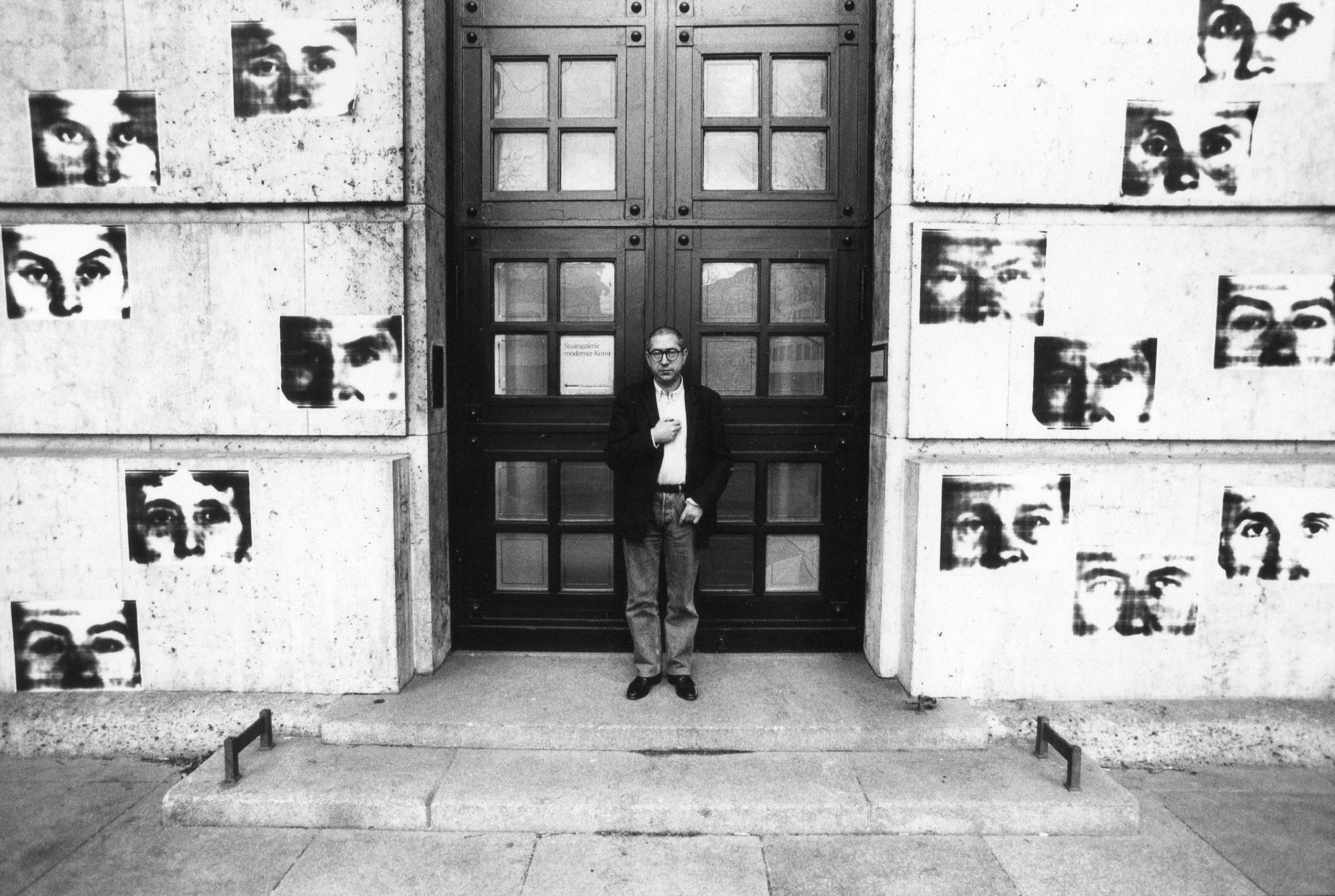
1994
Reopening of Haus der Kunst on May 19 with “Elan Vital oder Das Auge des Eros” (Elan vital. The Eye of Eros). The show is exemplary for the institution’s future program, which focuses on classical modern art while simultaneously exploring selected positions of contemporary art.
1996
Installation of a permanent documentation focusing on Haus der Kunst’s past in the building’s hallway (until 2012).
2001
Establishment of the “Theater im Haus der Kunst” as an interim stage for the Bavarian State Theater in the West Wing (until 2007).
2003
Chris Dercon (*1958) is appointed director. The commitment to contemporary positions is intensified.
Architecture, design, fashion, and film are incorporated into the program. Launch of the project “Critical Reconstruction,” which reorients the examination of the structure’s architecture and history.
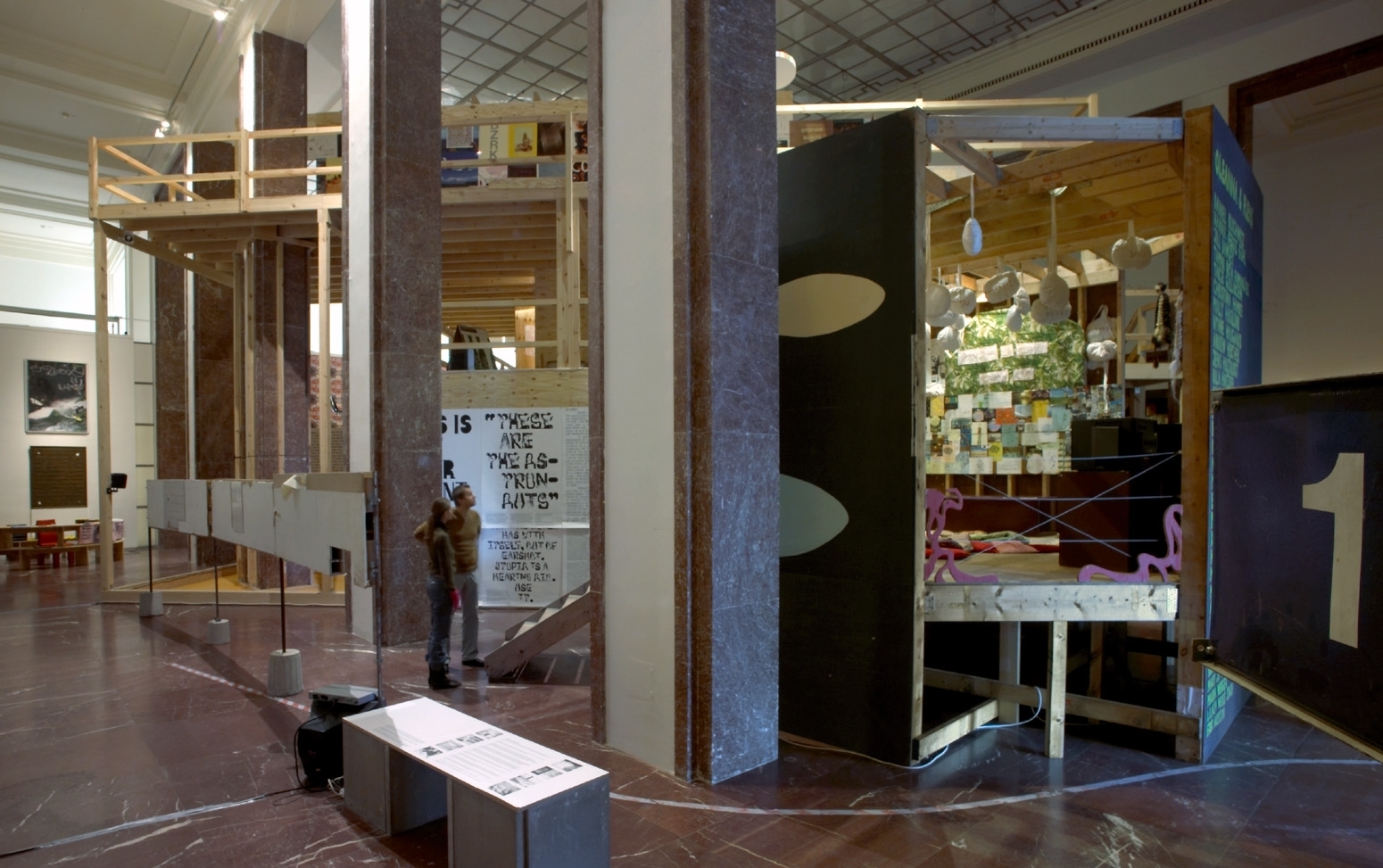
2005
Opening of the Historical Archive and examination of its holdings.
2011
In the rooms of the former air raid shelter, temporary exhibitions of film and media art from the Sammlung Goetz are presented (until 2021).
Okwui Enwezor (1964-2019) becomes the new director of Haus der Kunst, which will be transformed into a global institution of contemporary art.
2012
With the exhibition “Geschichten im Konflikt. Das Haus der Kunst und der ideologische Gebrauch von Kunst, 1937-1955” [Histories in Conflict: Haus der Kunst and the Ideological Uses of Art, 1937-1955], the institution commemorates the 75th anniversary of its opening on July 18, 1937.
Under the title “Der Öffentlichkeit- Von den Freunden Haus der Kunst” [To the Public- from the Friends of Haus der Kunst] the Gesellschaft der Freunde supports a new series of commissioned works designed specifically for the Middle Hall (until 2020).
2013
Plans begin for a general renovation of the building. Commissioning of the architecture firm David Chipperfield following an EU-wide, two-stage competition process.
Instead of the annual “Große Kunstausstellung München“, Ausstellungsleitung e.V. now hosts the “Biennale der Künstler“ as a biannual showcase. In 2014, the association “Künstlerverbund im Haus der Kunst e.V.“ is founded, desribing itself as the successor to Ausstellungsleitung e.V.
2014
Opening of the “Archiv Galerie”, a permanent exhibition space dedicated to Haus der Kunst’s history.
2015
With the exhibition “Louise Bourgeois. Strukturen des Daseins: Die Zellen” [Louise Bourgeois. Structures of Existence: The Cells], Haus der Kunst presents its first solo show in the West Wing dedicated to a female artist.
2016
For the first time in recent exhibition history, the show “Postwar: Art between the Pacific and the Atlantic, 1945 - 1965” examines the post-war period as a global phenomenon.
2018
A new series of presentations is being conceived for the Archiv Galerie in cooperation with local and international partners: “Archives in Residence” focuses on autonomous archives as alternative places of knowledge production.
2020
Andrea Lissoni (*1970) becomes the artistic director of the foundation. The program of Haus der Kunst is being realigned: the focus is on transnational, interdisciplinary and visionary practices and the dialogues between the visitors and the artists, which put the urgent questions of our society in the foreground.
2021
Re-installation of Mel Bochner's word chain “The Joys of Yiddish” (2006/2013) on the north cornice frieze.
Beginning of the TUNE-series: Haus der Kunst invites artists to short sound residencies that are located between sound, music and visual art. The contributions are genre, epoch and style spanning and create references to the current program.
2022
The exhibition “Fujiko Nakaya. Nebel Leben” is the first comprehensive exhibition of the Japanese artist and sculptor Fujiko Nakaya outside of Japan.
Establishment of the former air-raid shelter as the “LSK Galerie” and a place where historiography is questioned and reconsidered by creating new narratives from sound and moving images. With the work show “Fragments, or just Moments“ by the American artist Tony Cokes, an exhibition can also be experienced for the first time both in Haus der Kunst and in the surrounding public space.
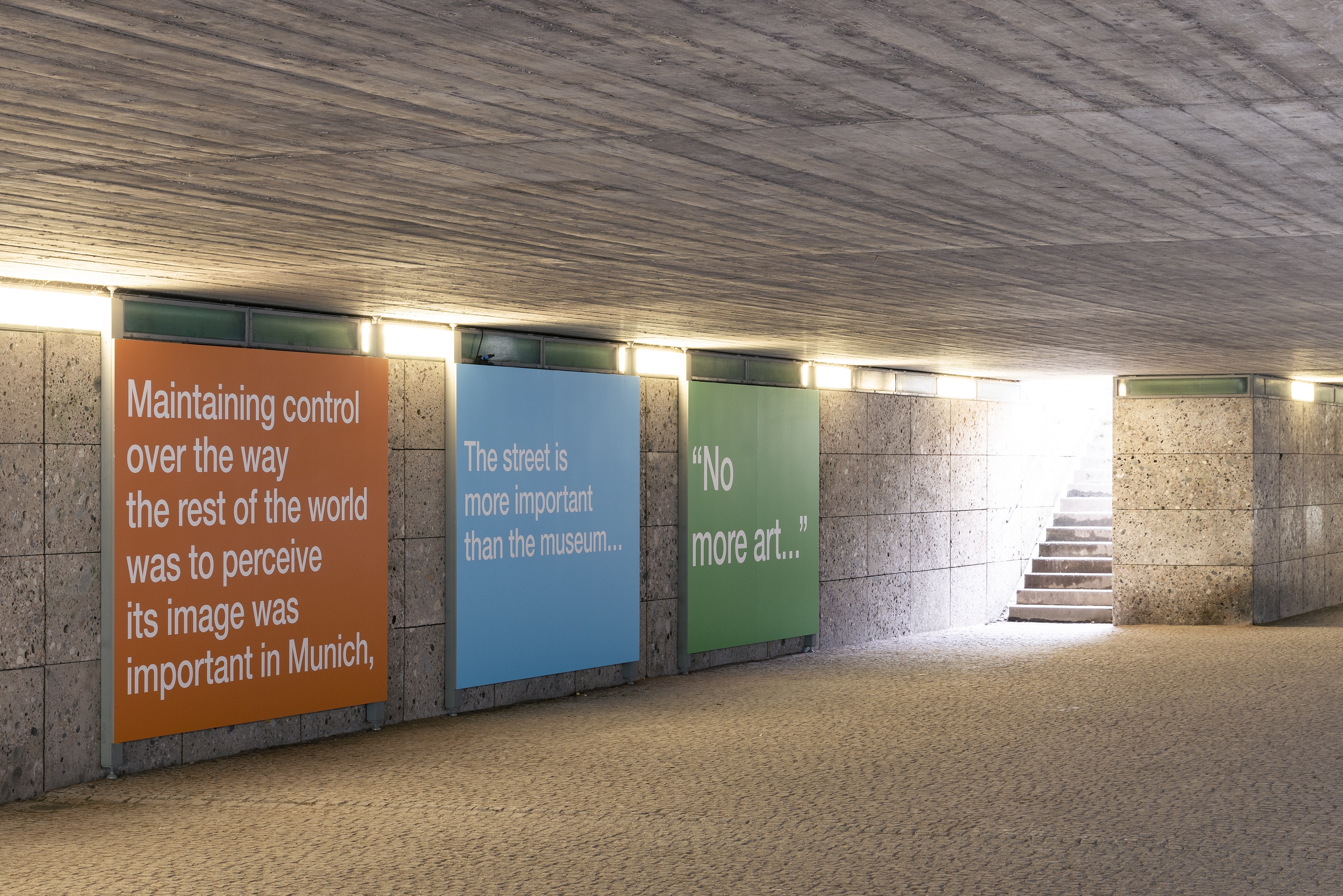
2023
With “Open Haus” on the last Friday of every month, Haus der Kunst is renewing and expanding its range of free participation in art and culture.
"Inside Other Spaces. Environments by Women Artists 1956-1976" achieves the highest visitor numbers in the recent history of Haus der Kunst. This group exhibition is the first exhibition of its kind in which immersive key works by eleven female artists spanning three generations from Asia, Europe as well as North- and South America have been reconstructed after a three-year research process.
